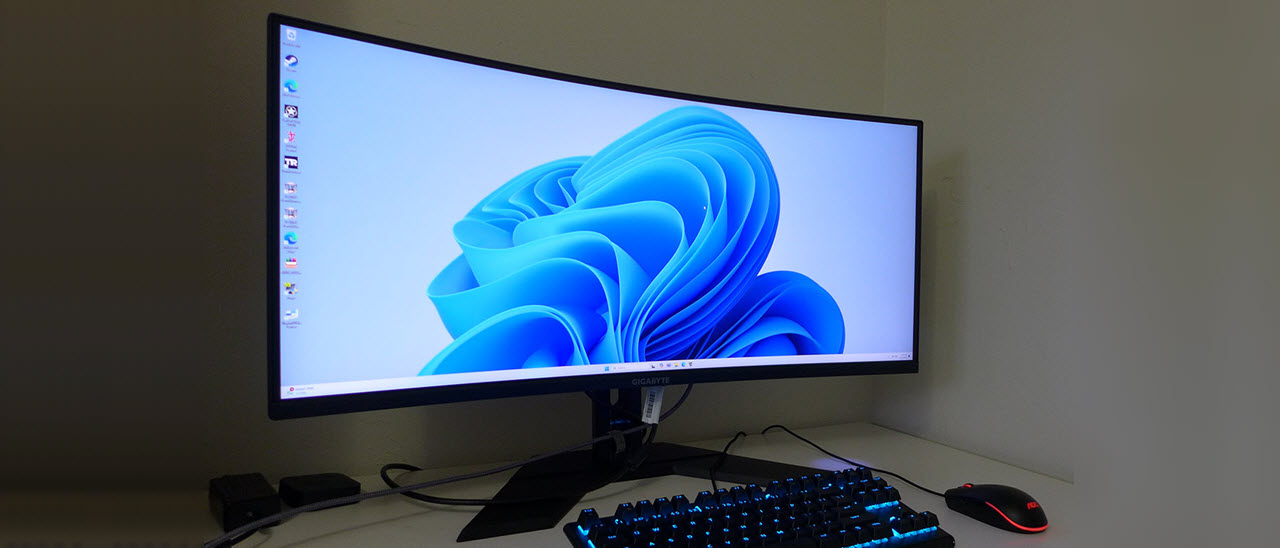Why you can trust Tom's Hardware
Our HDR benchmarking uses Portrait Displays’ Calman software. To learn about our HDR testing, see our breakdown of how we test PC monitors.
The G34WQCP supports HDR10 content with an automatic switch. There are no picture controls available, and no dimming is included. Luckily, the VA panel has excellent native contrast.
HDR Brightness and Contrast
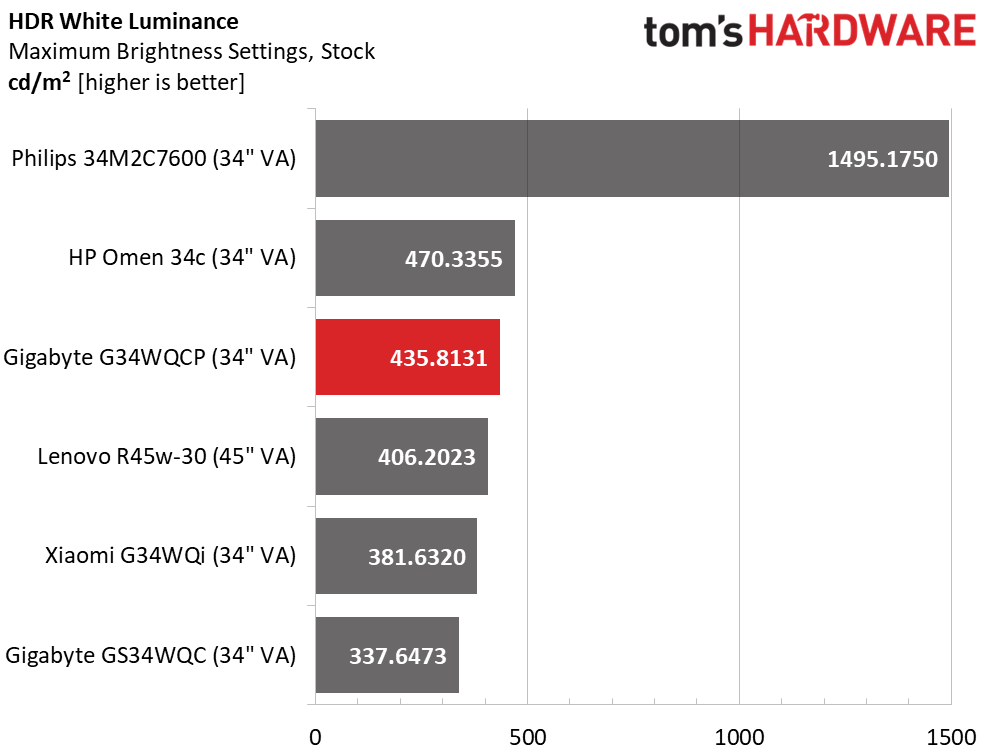
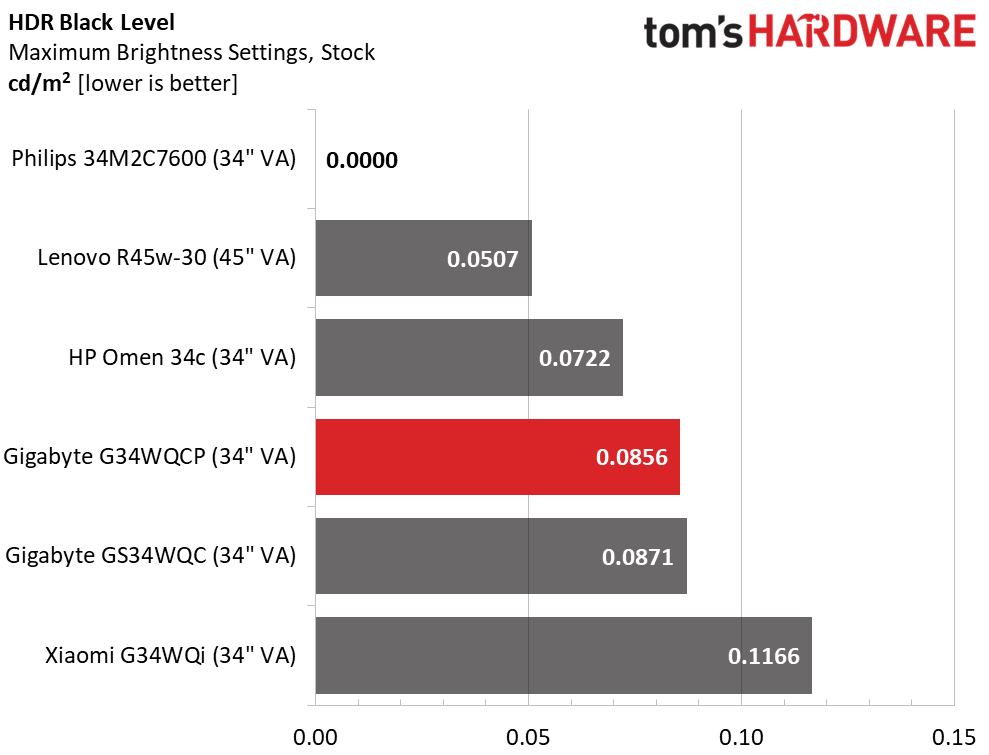
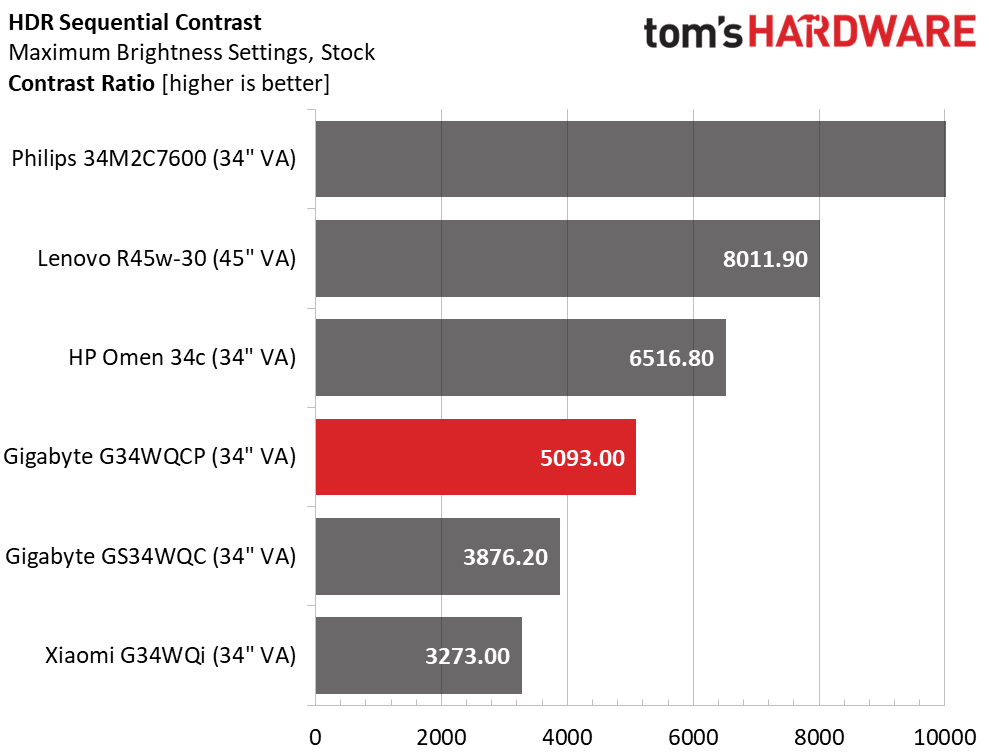
There are a couple of things going on here. The G34WQCP has a decent HDR contrast ratio of 5,093:1. That is achieved without any zone or field dimming. The HP and Lenovo use field dimming to up their dynamic range while the Philips has a full-array Mini LED backlight that shuts off during the black field test to create an unmeasurable contrast ratio. The G34WQCP chief advantage is high native contrast for a low price. Few users will complain about its HDR image.
Grayscale, EOTF and Color
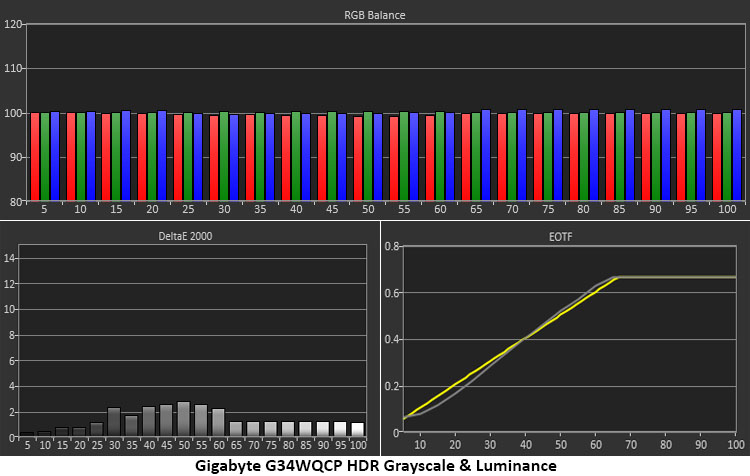
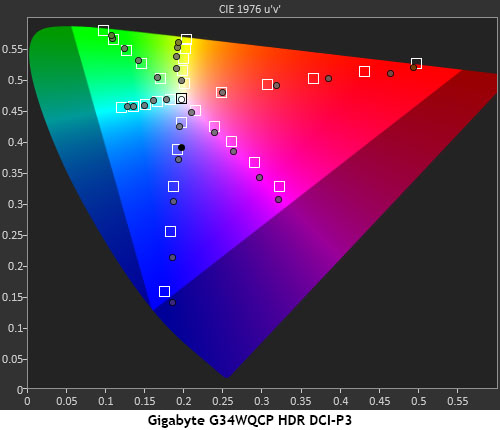
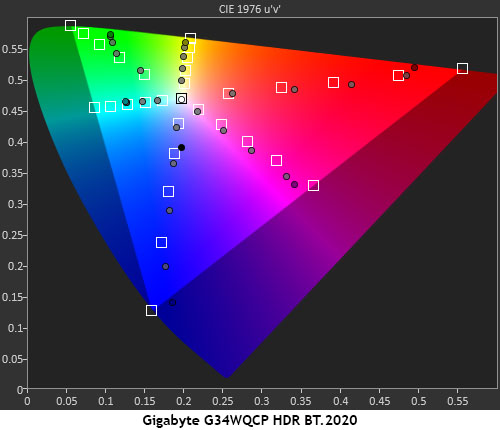
No one will complain about the G34WQCP’s HDR color accuracy either. Grayscale tracking is free from visible error and the EOTF rides the reference line almost perfectly. There are no issues of consequence in the first chart.
In the HDR gamut test, you can see slight red oversaturation, which is typical of the HDR computer monitors I’ve tested. Points run linearly so there is no negative here. HDR color is rich and vibrant with natural tones and crisp detail. I observed the same behavior in the BT.2020 test where the G34WQCP runs out of color at 85% red, 70% green and 95% blue. This is also a typical result for non-Quantum Dot displays.
Test Takeaway: The G34WQCP doesn’t offer any extra contrast for HDR content, so it has some upward potential. But the picture looks great thanks to an already-broad dynamic range that exceeds 5,000:1. While a Mini LED screen like the Philips 34M2C7600 will have more impact, the G34WQCP costs less and delivers superior game performance. For $350, it delivers bright and colorful HDR.
MORE: Best Gaming Monitors
Get Tom's Hardware's best news and in-depth reviews, straight to your inbox.
MORE: How We Test PC Monitors
MORE: How to Buy a PC Monitor

Christian Eberle is a Contributing Editor for Tom's Hardware US. He's a veteran reviewer of A/V equipment, specializing in monitors. Christian began his obsession with tech when he built his first PC in 1991, a 286 running DOS 3.0 at a blazing 12MHz. In 2006, he undertook training from the Imaging Science Foundation in video calibration and testing and thus started a passion for precise imaging that persists to this day. He is also a professional musician with a degree from the New England Conservatory as a classical bassoonist which he used to good effect as a performer with the West Point Army Band from 1987 to 2013. He enjoys watching movies and listening to high-end audio in his custom-built home theater and can be seen riding trails near his home on a race-ready ICE VTX recumbent trike. Christian enjoys the endless summer in Florida where he lives with his wife and Chihuahua and plays with orchestras around the state.
-
lttenso Hi... I was ready to Pull the trigger, but then i saw a new revison on gigabyte site, called g34wqcp rev. 2.0, with some diferences... 10bit display panel, mor nits of brigtness, a new stand... Etc... Does the 10 bit panel makes diference? The strange thing is, it maintain the same name with a complete diferent monitor... What do you think about this? Thank youReply -
cyrusfox My main complaint here is the VA panel, though less of a concern as it is a curved display and per your review, sounds like it is the best of this substandard display tech (I have a samsung VA ultrawide and the color shift from center to edge is horrendous, no curve though). Sadly many games I enjoy don't allow ultrawide configuration (SC2). As such I will stick with 16:9|16:10|4:3 configurations going forward.Reply -
Shug_Scotland I got this for my first PC. Its a great monitor, ive played on some good monitors twice the price of this Gygabyte G34WQCP. Just make sure its the updated model that has the P at the end of the model number. If it hasnt got that its the older model which isnt as good. But ive been really impressed with this. Only one draw back is the built in speakers. They arent great. But ive been using them and they're okay. But i understand people like to moan and if there is 1 thing with this product, thats what the moaners will go for. But for me the monitors a 10/10 easy !! £250 ? its a steal trust me.Reply -
Shug_Scotland Reply
I got the updated one last week with the P on the end and its brilliant. Ive played on some good monitors and this beats them. Currys doing it for £250. Free delivery.lttenso said:Hi... I was ready to Pull the trigger, but then i saw a new revison on gigabyte site, called g34wqcp rev. 2.0, with some diferences... 10bit display panel, mor nits of brigtness, a new stand... Etc... Does the 10 bit panel makes diference? The strange thing is, it maintain the same name with a complete diferent monitor... What do you think about this? Thank you
